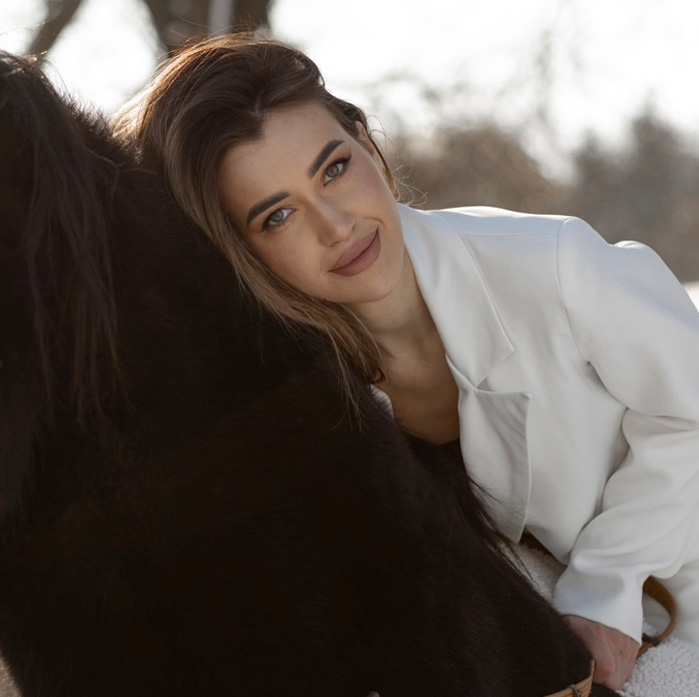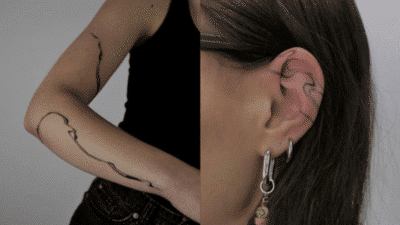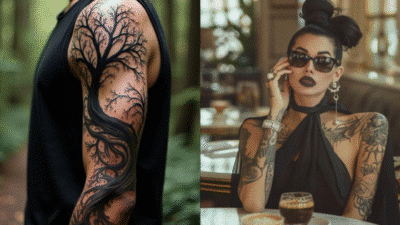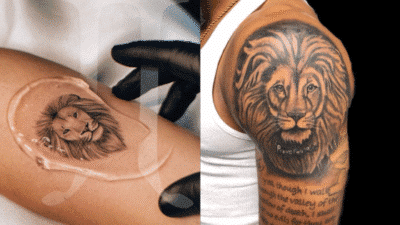

Men’s tattoos offer a way to express personality, values, and style through unique designs. Choosing the right tattoo depends on factors like size, placement, and meaning to create a lasting and personal piece of art. Tattoos can range from simple symbols to large, intricate designs.
Many men pick tattoos that reflect something important to them or fit their lifestyle and profession. The choices made before getting a tattoo, such as design and color, also affect how it will look and age over time.
Understanding what works best for the individual and caring properly for the tattoo after it is done helps keep it looking good for years. This makes the entire process from choice to care very important.
Key Takeways
- Tattoos should reflect personal meaning and style.
- Placement and size affect how a tattoo fits on the body.
- Proper care is key to maintaining the tattoo’s appearance.
Popular Men’s Tattoo Styles
Men choose tattoo styles based on personal meaning, aesthetic appeal, and cultural influences. Some styles focus on bold designs and colors, while others emphasize realism or intricate patterns.
Traditional and Old School


Traditional and Old School tattoos are known for their bold lines and bright colors. They often feature classic symbols like anchors, roses, skulls, and swallows. These tattoos use a limited color palette, mainly red, green, yellow, and black.
This style emphasizes simple shapes and clear images, making the tattoo easy to recognize from a distance. It has roots in Western tattoo history and remains popular for its timeless look and strong visual impact.
Realism


Realism tattoos aim to recreate images with photographic detail. They often depict portraits, animals, or objects in a lifelike way. This style requires high skill to capture shading, depth, and texture accurately.
Realism tattoos can be black and grey or full color. They focus on precision and detail, making them a favorite for people who want tattoos that look like real pictures.
Blackwork


Blackwork tattoos use only black ink with filled-in shapes or detailed patterns. They range from bold geometric designs to intricate tribal art and abstract forms.
This style emphasizes contrast and shading without color. Patterns in blackwork can symbolize strength, protection, or spiritual meanings depending on cultural background.
Japanese Irezumi


Japanese Irezumi is a traditional tattoo style with large, colorful designs often covering the back or arms. Common themes include koi fish, dragons, cherry blossoms, and samurai warriors.
These tattoos have strong cultural significance and storytelling elements. They are known for smooth shading, vibrant colors, and detailed backgrounds that blend with the main design.
Tattoo Placement Ideas for Men
Men often choose tattoo placements based on visibility, meaning, and size. Different body parts suit specific styles and designs. Some areas handle detailed work well, while others are best for bold, simple tattoos.
Arm and Sleeve Tattoos


Arm tattoos are popular for men because they offer room for both small and large designs. The upper arm is ideal for tattoos that can be easily covered or shown off. Sleeve tattoos, which cover the arm fully or partially, allow for complex themes and detailed artwork.
The forearm is good for visible tattoos that can be seen at a glance. It suits text, symbols, or smaller images. The inner arm is more private, often chosen for personal or meaningful tattoos.
Chest Designs


Chest tattoos can cover a large area and work well for bold, symmetrical designs. Men often pick this spot for tattoos with deep personal meaning, like family symbols or quotes. The skin on the chest is generally smooth and flat, which helps with detailed work.
Placement can vary from the full chest to one side. Upper chest tattoos are visible with open shirts, while lower chest tattoos can be hidden easily. Pain levels vary but tend to be higher near the sternum and collarbones.
Back Tattoos


The back is one of the largest tattoo canvases a man has. It suits big, detailed designs like portraits, animals, or landscape scenes. Full-back tattoos require multiple sessions due to their size.
Men often choose the upper back for medium-sized work that can be covered by clothing. Lower back tattoos are less common for men but still an option. The back’s muscle and skin allow for designs with good detail and shading.
Leg Artwork


Leg tattoos give men options from the thigh down to the calf and ankle. Thigh tattoos are often bigger and more private. They are good for designs that need space and detail.
Calf tattoos are more visible and work well for vertical designs or bands. The ankle is better for small, simple tattoos. Pain varies, with the thigh usually less painful than the shin or ankle because of muscle and fat padding.
Meaningful Tattoo Concepts
Men often choose tattoos that reflect important parts of their life and identity. These designs can show deep connections to family, carry symbolic meanings, represent nature, or include powerful words that inspire.
Family and Heritage


Tattoos about family or heritage often use symbols or images that represent a man’s background. Common choices include family crests, ancestors’ names, or cultural icons. These tattoos serve as reminders of where a person comes from and the values they hold.
Men may also get tattoos of birthdates or portraits of loved ones. These designs show respect and bond with family members. Heritage tattoos can include flags, traditional patterns, or language scripts tied to a specific culture. The key is personal meaning connected to roots and relationships.
Symbolic Designs


Symbolic tattoos use images to express ideas like strength, courage, or freedom. Popular symbols include lions for bravery, anchors for stability, and arrows for direction. These designs are chosen because they communicate values or goals without words.
Geometric shapes or abstract symbols are also common. They can represent balance, growth, or protection. Symmetry and simplicity help make these tattoos clear and timeless. Men often select symbols that remind them of personal beliefs or life challenges overcome.
Nature and Wildlife


Nature-themed tattoos connect a man to the outdoors or animal traits he admires. Trees symbolize growth and endurance. Mountains stand for strength and persistence. These images can represent both physical and mental qualities.
Wildlife tattoos often portray animals like wolves, eagles, or bears. Each animal has traits linked to courage, freedom, or leadership. Men pick these designs to express a connection to the natural world or to symbolize personal characteristics. The style can range from detailed realism to clean, simple outlines.
Quotes and Script


Words in tattoos can carry powerful messages about life, motivation, or wisdom. Common styles include bold lettering or elegant script. Men might choose quotes from famous leaders, authors, or personal mantras.
Script tattoos often include single words like “Honor,” “Faith,” or “Resilience.” Longer quotes focus on lessons learned or important beliefs. Placement is important to make the text readable and meaningful. The font choice helps set the tone, whether serious, classic, or modern.
Trends in Men’s Tattoo Art
Men’s tattoo art is showing clear directions in style. Designs vary from sharp, clean lines to soft, flowing colors. Many men choose tattoos that blend tradition with modern aesthetics.
Geometric Patterns


Geometric tattoos use shapes like triangles, circles, and lines to create balanced images. They often display symmetry and precision. These tattoos can symbolize order, harmony, or complexity.
Many men pick geometric designs because they look sharp and modern. Shapes can be combined or repeated to form larger, meaningful patterns. This style works well on arms, chest, and back.
Another appeal is the flexibility of geometric tattoos. They can stand alone or be part of bigger artwork. Some designs are purely abstract, while others incorporate natural or spiritual symbols, like mandalas or animals built from shapes.
Minimalist Tattoos


Minimalist tattoos focus on simplicity. They use few lines or small shapes to express an idea clearly. This trend appeals to men who want subtle, clean tattoos with hidden meaning.
Common minimalist designs include small symbols, words, or basic icons. They are often placed where they can be easily covered, like wrists or behind the ear. The minimal style suits first-time tattoo wearers or professionals.
Because they use less ink and detail, minimalist tattoos usually take less time to apply. They also age better, with less blurring over time. This style values clarity and quiet impact over bold statements.
Watercolor Influence


Watercolor tattoos mimic the look of watercolor paintings. They use soft, blended colors without black outlines. This creates a fluid and artistic feel. Men choosing this style want a unique, painterly look.
Watercolor tattoos can portray everything from nature scenes to abstract splashes of color. The style works well with florals, animals, and even portraits. It adds a gentle contrast to hard, traditional tattoo lines.
Despite the bright, flowing look, watercolor tattoos need careful aftercare. The colors may fade faster than solid ink. Artists skilled in blending and shading are important to achieve this effect properly.
Tattoo Preparation and Aftercare
Getting a tattoo involves careful planning and proper care afterwards. Attention to choosing the right artist, knowing how the tattoo heals, and following maintenance routines helps ensure the tattoo looks good for years.
Choosing the Right Artist


Finding a skilled tattoo artist is crucial. He should look for someone with a clean studio and clear licensing to guarantee safety. Reviewing the artist’s portfolio helps verify their style matches the desired design.
It’s important to ask about the ink and equipment used. A good artist uses sterile needles and high-quality ink, reducing the risk of infection. Talking about any health concerns or allergies before the session can prevent problems.
Scheduling a consultation before the tattoo day allows the artist to discuss size, placement, and colors. This meeting helps the client feel confident and makes sure both agree on the final plan.
Understanding the Healing Process

After getting a tattoo, the skin will be tender and may swell or scab. This is normal and shows the body is healing. It usually takes 2 to 4 weeks for the outer skin to heal completely.
Keeping the tattoo clean is essential. Washing it gently with mild soap and lukewarm water, then patting dry, prevents bacteria growth. Applying a thin layer of a recommended ointment or lotion helps keep the skin moist.
The person should avoid direct sunlight, swimming, or rubbing the area during healing. Picking at scabs or peeling skin can cause damage or fading. Follow the artist’s care instructions closely to avoid infections or poor healing.
Long-Term Maintenance

Even after healing, tattoos need care to stay sharp. Regularly moisturizing the tattoo with unscented lotion prevents the skin from drying out and the ink from dulling.
Sun exposure breaks down tattoo ink over time. Using sunscreen with at least SPF 30 on the tattoo helps protect its colors. Reapplying sunscreen whenever outdoors improves protection.
Touch-ups can restore the tattoo if it fades or blurs with age. Checking the tattoo’s condition yearly helps decide if a visit to the artist is needed. Proper maintenance means the tattoo remains clear and vibrant for many years.
Choosing the Best Tattoo Size
Selecting the right tattoo size depends on where the tattoo will go and how detailed the design is. Size affects healing time, pain level, and how noticeable the tattoo will be.
Small Tattoos


Small tattoos usually fit well on the wrist, ankle, or behind the ear. They take less time to complete, which means less pain and quicker healing. Small tattoos work best with simple designs or symbols.
Fine details can be hard to keep clear in small tattoos, so bold lines and minimal shading often work better. They are also easier to hide under clothing if needed for work or personal reasons.
Medium and Large Pieces


Medium and large tattoos cover more skin, offering space for detailed artwork. Common spots include the chest, back, or upper arms. These tattoos take longer to finish and usually need more than one session.
Because they cover a larger area, these tattoos show more of the design’s complexity. They might cause more pain and longer healing times. People should consider their lifestyle and pain tolerance when choosing bigger sizes.
Color vs. Black and Grey Tattoos


Men often choose between color and black and grey tattoos based on style and personal preference. Color tattoos use bright inks to create vivid images. They can make designs stand out and look more lively.
Black and grey tattoos use only shades of black and grey ink. These tattoos offer a classic and timeless look. They often highlight shadows and details better than color tattoos.
Each style has pros and cons. Color tattoos may fade faster under sun exposure. They usually need more touch-ups over time. Black and grey tattoos tend to age well and keep their look longer.
Some designs work better in one style. For example, portraits often look more realistic in black and grey. While colorful designs can bring out details in nature or abstract art.
| Feature | Color Tattoos | Black and Grey Tattoos |
|---|---|---|
| Visual impact | Bright, vibrant | Subtle, detailed |
| Longevity | Fades faster | Longer-lasting |
| Touch-ups needed | More frequent | Less frequent |
| Best for | Bold, lively designs | Realism, shading |
Choosing between the two depends on the image he wants to create and how much maintenance he is willing to do. Both styles can suit different personalities and tattoo ideas.
Custom vs. Flash Designs


Custom tattoo designs are created specifically for the person getting tattooed. They reflect unique ideas, stories, or personal symbols. This makes the tattoo one of a kind and tailored to an individual’s taste.
Flash designs are pre-drawn images available at many tattoo shops. They offer a quick choice and often come in standard styles like skulls, animals, or tribal shapes. These designs are ready to ink, making the process faster.
| Feature | Custom Designs | Flash Designs |
|---|---|---|
| Uniqueness | Highly unique | Common, repeated |
| Design process | Collaborative, slow | Pre-made, quick choice |
| Cost | Usually higher | Generally lower |
| Personal meaning | Strong personal meaning | Can be more general |
Custom tattoos can take longer and may require multiple sessions. Flash tattoos can be done quickly since the design is already available.
Many men prefer custom tattoos for the chance to express their identity. Others choose flash designs for convenience or budget reasons. Both have clear advantages depending on what the person wants.
- 0shares
- Facebook0
- Pinterest0
- Twitter0



